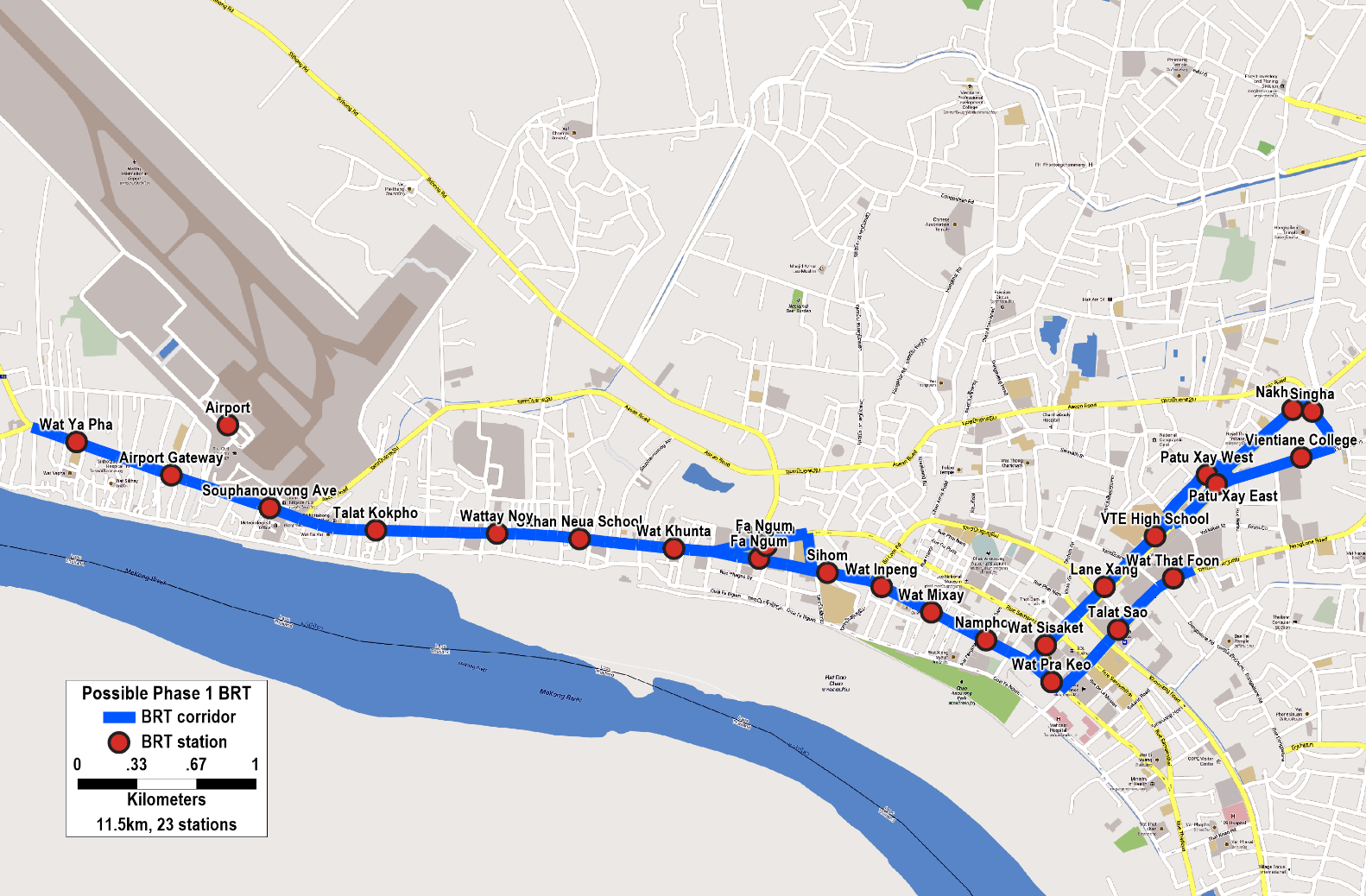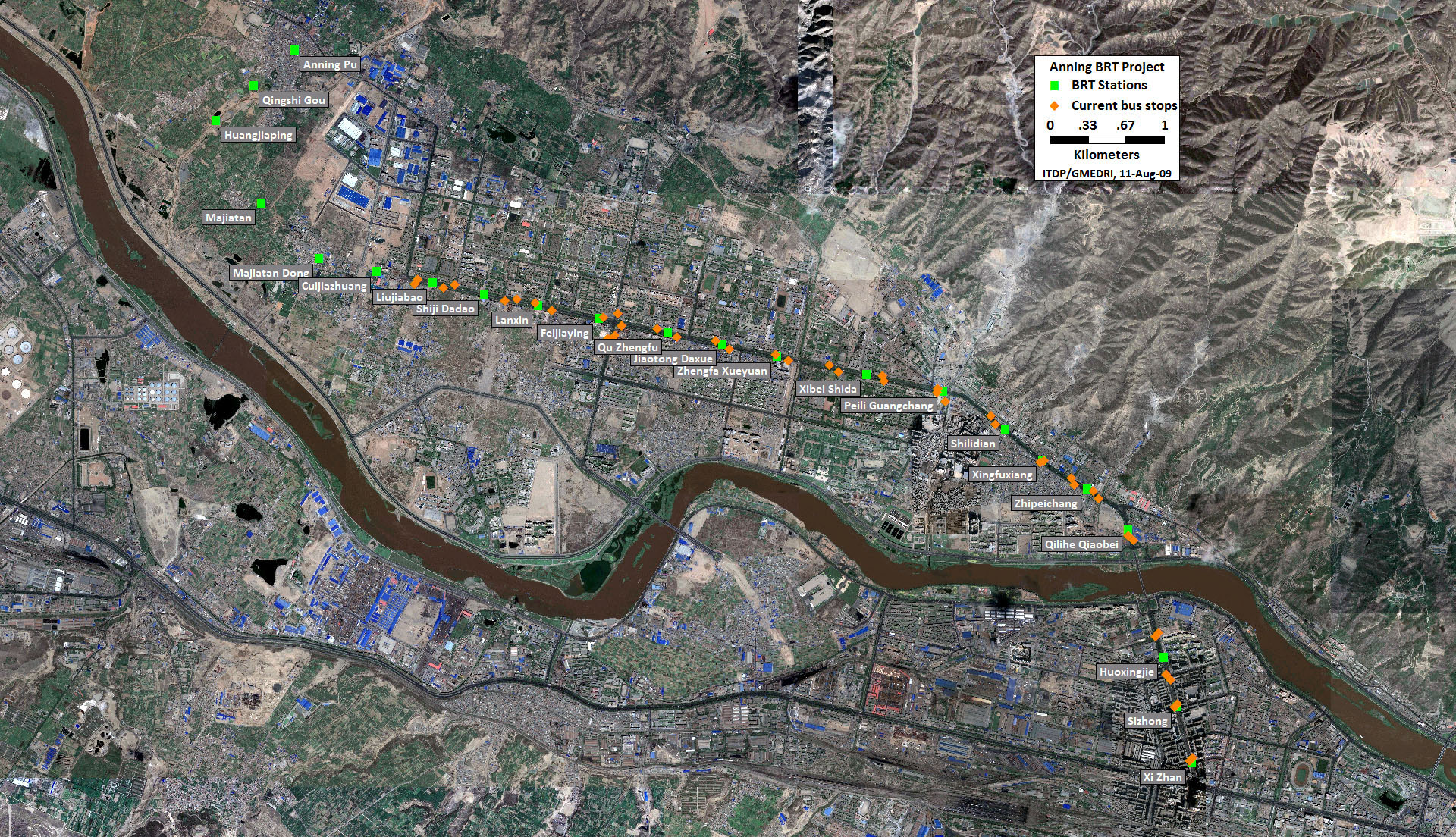25.5Station Location
To get the right word in the right place is a rare achievement.Mark Twain, American writer, 1835–1910
This section covers the location of a station along a BRT corridor. BRT stations are generally spaced 300 meters to 800 meters apart. In an urban area, spacing optimizes at around 450 meters. Beyond this, more time is imposed on customers walking to stations than is saved from higher bus speeds. Below this distance, bus speeds will be reduced by more than the time saved with shorter walking distances. See Chapter 6: Service Planning for more details.
Outside of overall system requirements, the exact location of a station is highly site-specific. The goal is to make the station as easy to access as possible and as close to nearby origins and destinations as possible. No one wants to see a station and not be able to get to it. Following are general consideration for locating stations.
- Existing bus stops may be prime locations and already ingrained in the public’s mental map of the area.
- Locate traffic signals, pedestrian crossings, bridges and tunnels to facilitate direct pedestrian access.
- Where possible, place the station at least 26 meters (85 feet) but ideally 40 meters (130 feet) from the intersections to minimize delays to the bus.
- Where the bus operates in mixed traffic, locate stations to ensure that the bus maintains its place in the traffic queue, can depart when ready, and does not have to re-merge into traffic.
- Map nearby origins and destinations, walking and cycling network, then adjust the station location to facilitate direct pedestrian access.
- Integrate stations into nearby buildings, plazas and commercial streets.
- Modular station units can be arranged to fit various sites.
- Stations may be separated by direction or serve both direction depending on space available and operation requirements. Transfer stations should serve both directions simultaneously.
- At signalized intersections, stations should be near-side so that boarding and alighting time can overlap with the traffic signal red phase. Provide traffic signal priority for the BRT.
- At unsignalized locations, stations should be far-side (in the direction of travel) so that passengers exit and cross behind the bus.
- Where blocks lengths are short, the station can be placed mid-block and accessed from both ends.
- Allow for additional platforms within a 20 year horizon. It is better to plan for and reserve the space before additional development occurs.
- Avoid placing stations simply where land is available. In the long run, these locations may not be optimal and will just frustrate passengers. Stations should not be located in the places of least resistance, but close to the places where people want to go.
One of the most common mistakes made during BRT planning is to place stations too far apart. As a rule of thumb, BRT stations should be spaced around 450 meters apart in urban areas; or 600m-700m for stations with multiple sub-stops. Outside built-up areas stations may be further apart, though should rarely be more than 800 meters apart. Yichang’s BRT in the map below shows one particularly long gap between stations, of 1.7 kilometers between Pinghu and Sanxia Chacheng, due to a cliff alongside a riverfront that has no passenger demand or space for a station, yet still achieves an average station spacing of less than 650m. In the lower capacity system designed by ITDP in Vientiane, stations are smaller and this is reflected in an average station spacing of 500m (Figure 25.49).


The best guide to BRT station location is the location of existing bus stops. Usually, though, especially where high capacity BRT stations are being implemented, placement is heavily constrained by local physical conditions of the corridor including the locations of intersections.
Figure 25.51 top locations were used to guide the BRT station locations in Lanzhou and Yichang. In the case of Lanzhou, the BRT stations largely corresponded with the current bus stop locations, though with selected variations. In Yichang, station planning also took into account existing bus stops for most of the corridor, but for the central area the BRT station coverage is much denser than the bus stops. This is due to the fact that the central area bus stop coverage in Yichang prior to the BRT system implementation was inadequate, with stations spaced too far apart.

